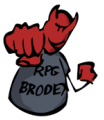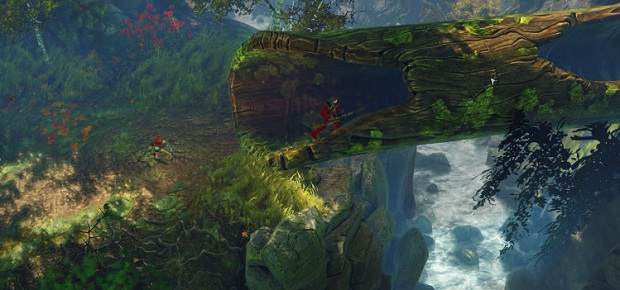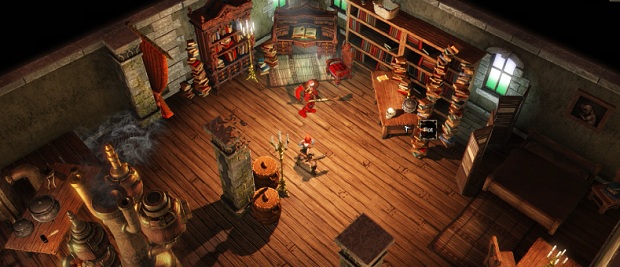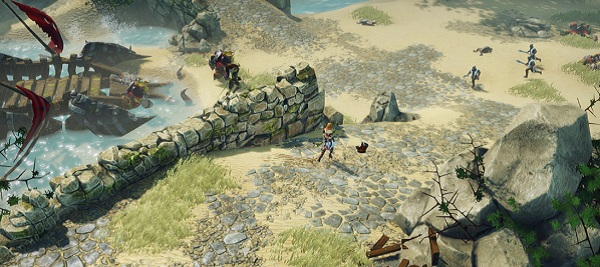There’s a sign on the wall in Larian’s studio, almost lost among the concept art (some cheesecake bikini armour is in evidence, but more on that later).

RPS will RPS.
There’s a sign on the wall in Larian’s studio, almost lost among the concept art (some cheesecake bikini armour is in evidence, but more on that later).

I'll take some notes, but fuck me if I'm going to write a gragt like length editorial piece.another victim suckered into a rpgcodex editorial 'job'.





Don't respond like a reverse RPG watcher, there is plenty of great content in this preview.There’s a sign on the wall in Larian’s studio, almost lost among the concept art (some cheesecake bikini armour is in evidence, but more on that later).
RPS will RPS.















I'll take some notes, but fuck me if I'm going to write a gragt like length editorial piece.another victim suckered into a rpgcodex editorial 'job'.
Unexpectedly, the game begins by placing the players in the role of investigators. There’s a murder and a mystery to go along with it,
Unexpectedly, the game begins by placing the players in the role of investigators. There’s a murder and a mystery to go along with it,
Did Adam really play Ultima VII?


yeah. fucking belgians, not only they have the best beer in the world, they also get to visit Larian.




Those of you looking for some hands-on impressions of Larian's promising action RPG Divinity: Original Sin need only look over at this extensive piece on Rock, Paper, Shotgun.
Hands-On: Divinity – Original Sin
By Adam Shit on December 9th, 2013 at 9:00 pm.

Preview events often involve around half an hour with a game, while carefully chaperoned through its corridors. I spent sixteen hours playingDivinity: Original Sinover two days in Belgium last week and nobody told me what I should or shouldn’t do. I spent two hours looking for a potato because I wanted to make some chips and Larian’s founder actively encouraged me in that mighty quest.
If I hadn’t had a flight to catch, I would have played for another sixteen hours over the next couple of days as well. There aremore technically impressivefantasy RPGs coming out next year and there’s a great deal of work still to be done, but Larian’s latest is living up the early promise and is right near the top of my most wanted list.
There’s a sign on the wall in Larian’s studio, almost lost among the concept art (some cheesecake bikini armour is in evidence, but more on that later). It reads, and I’m paraphrasing both Larian and George Mallory here, “Why can the player move a flowerpot? Because it’s there.” To a small extent, those words summarise why Original Sin might well be the most interesting upcoming RPG for somebody like me – somebody who likes to push at the boundaries of a game’s systems, bending them until they crack.
Some of the time I spent with the game was productive, in a questing sort of sense, but I filled the majority of the hours with playful diversions, and one particularly absurd and drawn-out battle that took up most of an afternoon. I’ll talk more about that latter escapade and combat in general later on, but first let’s talk about flowerpots. By which I mean, I’m going to write about flowerpots and hopefully you’re not going to fall to sleep or start looking at pictures of cats instead of reading my wise words.

Like my love of CRPGs, Original Sin’s particular systemic design goes all the way back to Ultima VII. Farther still, actually, but that’s the most significant milestone. Before we even arrived at the studio, Larian founder Swen Vincke had politely admonished me for my claim, inthis article, that Thief: The Dark Project was just ahead of Ultima VII as ‘most important thing ever’ in my personal gaming history. He also referred to me as a ‘relic’ because he doesn’t meet many games writers who have played Ultima VII.
In my new role as an admonished relic, which I play very well, I sat down to play. I’ve beenhands-on with Original Sinbefore but this is the post-Kickstarter version of the game and I was keen to see how much content and interactivity months of extra work had allowed for. A massive amount, is the answer. It’s a large game but it’s the density of each area and interaction that delighted me. In all the time I played, I didn’t venture out of the first of four large areas and, yet, I could go back and play for another sixteen hours and find entirely different ways to progress. Or tonotprogress, I suppose.
Unexpectedly, the game begins by placing the players in the role of investigators. There’s a murder and a mystery to go along with it, and the first major quest involves discovering the perpetrator. There’s a spot of turn-based orc bashing beforehand, as the heroic duo of Source Hunters head into town, but it’s entirely possible to spend the first four or five hours playing detective. Conversations – mostly comical and well-written – contain clues and accusations, and the flow of the investigation subtly pushes the player into the sizable town’s several districts. It’s a clever way to introduce characters and the different ways of interacting with the world.

For example, to find a way into one suspect’s house, me and my partner found that we could pick the lock, teleport inside using arcane magicks, talk somebody into giving us the key, or murder the person carrying the key. Everyone in the game can be killed and Larian have ensured that every quest can be completed using alternate means if an essential NPC dies. Many of these backup solutions are intentionally obscure and/or challenging, but that they exist at all shows Larian’s strength of commitment to this particular brand of sandbox/open world.
It’s a simulated place, with basic but functional behaviours for all of its inhabitants. Even the creatures out in the wilds have been hand-placed rather than spawning randomly and it was during a test of the ways in which monsters interact with NPCs that I created a catastrophe. I just wanted to know if orcs would attack guards if a group were lured close enough to the town walls. I ended up with blood on my hands. And on my clothes and coagulating on the soles of my shoes where I’d stepped through the rivers of the stuff that had spilled from all of the dead people. The dead people that the orcs had killed.
I instigated a massacre.
Yes, it turns out, orcs absolutely will attack guards. They’ll attack citizens as well, and let’s not forget cows and, most heinous of all, other ITALICS orcs. Of all the deaths that I caused during my silly experiment, the first stung the most.

Just outside the town, along a beach, there’s a single orc crying, mourning his brother who died in a large battle against a gang of humans. He doesn’t want to fight anymore, just to grieve in peace, and when he mentions that his brother was buried close by, along with some fancy equipment, there’s a sidequest to follow up on. That could be the end of the story. He’s just a big lonely blubbering survivor of war and he doesn’t need to be dealt with in any way whatsoever. I had no desire to desecrate his brother’s grave so I carried on down the road.
It wasn’t long before I ran into an altogether nastier group of orcs. They were level 8, on average, and counted shaman and a giant crossbow-wielding bastard among their number. Me and my companion were level 2. No area of the game is off-limits and creatures don’t level up when the player does, so it’s entirely possible to wander into trouble. This area was only a few screens from the town and yet we found ourselves outnumbered and outclassed. We should have just fled, using a combination of our magical teleporting triangles and good old-fashioned sprinting, but I had other ideas.
“Why don’t we lead them back to town? Let the guards kill them. We might get loads of experience if we join in the fight.” Later, as it turns out, I realised that the players only receive experience if they strike the killing blow. I suggested letting the guards whittle the orcs down and then killing orc and guard alike, but my partner wasn’t too pleased by that plan. I suppose one of us had to make sure the other behaved.
But the initial plan? It was a great idea. We agreed to lure the orcs, using most of our action points each turn to flee far enough that we couldn’t be struck, and then using our various powers to create hazards between ourselves and the enemy. Elements play an important role in combat, far more interesting than the WATER COUNTERS FIRE kind of system you’re probably imagining. That comes into play as well, but spells also change scenery.

Rivers can be frozen, creating new paths. Rainstorms can be summoned to soak enemies, making them more vulnerable to electric bolts and lightning strikes. A cloud of poisonous gas might explode if a fireball passes through it and even pools of blood, created as enemies and allies fall, will freeze and become slippery hazards. And it’s slippery-slidey ice that turned the first part of the battle into farce.
We intended to slow the orcs down, so we could ensure they didn’t catch us before we reached town, but we hadn’t reckoned on how clumsy they are. As soon as they reached the small pond that I’d frozen over, they slipped, fell on their backsides and remained stunned for a couple of turns. Then, when they stood, they’d take a step, slip, fall on their backsides and remain stunned for a couple of turns.
“We really need the Benny Hill music here.” My co-op partner said. I think she was prepared to abandon the plan, happy to flee while we had the chance, but I was determined.
Eventually, they crossed the ice and there, right in front of them, was their grieving fellow-orc. They slaughtered him. Maybe they were in a bad mood because of the humiliating experience they’d just endured, or maybe they didn’t tolerate tears from their own kind, but their assault was swift and sure.
Sod Benny Hill, I remember thinking, we need some sort of requiem mass. I’d really grown fond of the big eejit. With revenge and fury on my mind, I continued to lead the orcs to their doom at the town gates, using a teleport spell to drag a shaman ahead of us, farther down the road, so that we could pummel him a little for good measure as we travelled in our bizarre conga line.
Of course, as you already know, it all went horribly wrong. Turns out the guards aren’t quite ready to face a mob of orcs and we had to lead them through the town, massacring as they went, to the barracks, where the final surviving guard managed to kill the last of them. It was a bloody disaster and a member of Larian’s team, watching over our shoulders, whistled through his teeth: “Nobody has ever done that before.”

That’s the brilliance of the game though. It was a daft thing to do and it took ages, but it was memorable in a way that only that sort of deviance from the ‘correct’ path can be. Original Sin is a heavily scripted game, with thousands of lines of dialogue, hundreds of quests and characters, and carefully constructed tactical encounters – but everything is built on flexible systems, starting with those flowerpots, and that means almost anything is possible within the very broad rules of the world.
With enough strength, a character can drag items of furniture, or just about anything else. A bowl could be thrown into a room to set off a trap, or a rat could be chased in to much the same effect (a worse effect from the rat’s perspective). Both of these events rely on rules set within the game’s logic – the bowl has weight prescribing how far it can be thrown and the rat has been programmed to run away from people. If a character were trying to lift a wooden chest, they may be told they needed to upgrade their strength. Empty it of its contents and the weight will change accordingly, however, and the problem might be resolved.
Every item and character in the game has rules governing its behaviour and the player characters (solo is possible but the co-op allows drop-in play and adds a huge amount to interactions and combat alike – more on thathere) can tease and twist those rules as much as they like. It’s an enormous challenge for Larian to make sure everything functions as it should and at the moment, balance is as busted as the scales of the justice system, and odd discrepancies crop up frequently.
There’s plenty of work to do and a lot of it is the mathematics that will calibrate difficulty levels, loot drops, combat frustrations and levelling. The content is all there though, as is the language by which that content is understood, and my concerns about clumsy interactions and occasional placeholder text are more than outweighed by the sheer pleasure of tinkering with such a vast and bonkers playground.

Within four hours of playing with a total stranger, we’d both named our characters and were bickering over every minor decision. And we were laughing while we bickered. As we pursued the murder mystery, I declared that the game was fantasy noir, and that we were the squabbling heads of the land’s foremost detective agency. At the time, I was wearing a pumpkin on my head and wielding a scythe, and she was wearing a bucket and carrying the biggest staff I’ve ever seen.
Both of the characters, one male one female, can wear just about any combination of items. A stylish bucket or cooking pot can be combined with a full set of armour or a natty set of underwear. Although there’s (currently) no physical customisation of the body itself, there’s a Saints Row feel to the goofiness of the dress-up, and it’s good to see the new cover art, with two sets of sensible armour, pinned up on the wall alongside the original, with its single exposed midriff.
Along with the enormous spreadsheets full of possible items to create (cooking, tailoring, smithing, fletching, herbalism, alchemy and much more) and the tactical anarchy of the combat system, Larian have also made a world that’s joyful and inclusive. It’s a silly world, more Python than Tolkien, and it caters for earnest nobles, noble warriors, arrogant villains, neurotic shopkeepers and total strangers.

On the second day, after the mishap with the town massacre, we acquired a skill that allowed us to speak to animals and, rather than trying to save the world or solve a crime, decided to help a shabby tomcat win the heart of the elegant feline he loved. He required our assistance and, adjusting our headwear, we agreed to take on the Quest of the Missing Collar.
“What are your names, kind humans?” I imagine he asked.
“Pumpkin and Bucket, private investigators,” we nodded as we darted off into the wilderness. It was the role we had chosen to play.
Divinity: Original Sinis out early next year.
You know what this means, right? They ran out of money. There's simply no other explanation.That's pretty pathetic. ^_^
It's afternoon in Belgium. Where's the video, Vincke?








In before the RPS follow up on SJW is thrice the length.That's pretty pathetic. ^_^
It's afternoon in Belgium. Where's the video, Vincke?

The video's already recorded, uploading it costs nothing.You know what this means, right? They ran out of money. There's simply no other explanation.
Join us on Friday 13th
17:00 Brussels
8:00 Los Angeles
11:00 New York
Swen & David play the game to see if it's ready for Alpha release

https://twitter.com/LarAtLarian/status/408919080310431744About to embark on a long Divinity:Original Sin let's play
http://www.kickstarter.com/profile/larianstudios/commentsNot streaming, but recording for upload later on - it's pretty much my review of the alpha build to see if we're ready enough
There'll be a video of the alpha live tomorrow though
Dec 9, 2013 on Divinity: Original Sin.
Unexpectedly, the game begins by placing the players in the role of investigators. There’s a murder and a mystery to go along with it,
Did Adam really play Ultima VII?
I wondered this as well. Why didn't he mention the beginning plot similarity....?
Speaking of the video (dunno if this is the one you're waiting for), Stabbey's post over at SA says there's a stream of Swen and David playing the game scheduled for Friday 13th






















